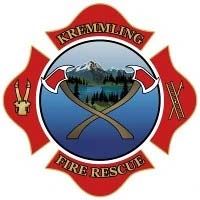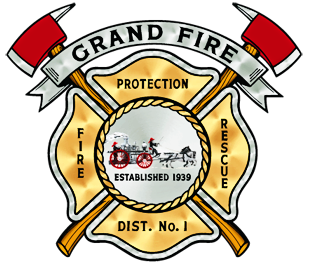Grand County Wildfire Council
Firewise Grand County
The info below is meant to help communities wishing to obtain “Firewise USA®” designation understand the steps and processes for getting and maintaining such designation.
Firewise USA® Program
As part of our efforts to become fire adapted, GCWC supports Firewise USA® as one very useful tool for community engagement and mitigation actions. Firewise USA® is a national recognition program that provides a collaborative framework to help neighbors in a geographic area get organized, find direction, and take action to increase the ignition resistance of their homes and community and to reduce wildfire risks at the local level. Any community that meets a set of voluntary criteria on an annual basis and retains an “In Good Standing Status” may identify itself as being a Firewise® Site. Firewise USA looks different in every community, and there is no end state, as wildfire mitigation is a continuous process that needs attention from year to year.
There are three easy steps to the process of becoming a Firewise USA® Community. GCWC and its Neighborhood Ambassadors are here to help. Reach out to Grand County Wildfire Council at 970-627-7121 or
Steps to becoming a Firewise USA® Community
Step 1) Organize it — Create a Firewise Committee or Designate a Resident Leader
- Create a committee of volunteers or appoint a resident leader to represent your community.
- Define the boundaries of your site and determine the number of individual single family dwelling units. Your local fire department, Colorado State Forest Service or GCWC can help you delineate the boundaries if needed.
- Create a Firewise account in the Firewise Portal. This account will be used to submit the initial application, submit annual reports, and manage the community. Note: Creating a Firewise Account in the Firewise Portal can be done during the Organize It or Plan It phases. Firewise Portal: https://portal.firewise.org/user/login
If you have questions about the portal, Firewise requirements, or the status of your application, please contact the Colorado State Firewise Liaison…
Daniel Beveridge, Wildfire Mitigation Program Specialist
Colorado State Forest Service
5060 Campus Delivery
Fort Collins, CO 80523-5060
Phone +1 970 491-8755
Step 2) Plan it — Complete a Community Risk Assessment & Write a 3-Year Plan
Risk Assessment
Resident leader should then collaborate with their local wildfire expert (from the local fire department, Colorado State Forest Service or GCWC…listed below) to complete a community wildfire risk assessment. The assessment should be a community-wide view that identifies areas of successful wildfire risk reduction and areas where improvements could be made. Emphasis should be on the general condition of homes and related home ignition zones. The assessment is a living document and needs to be updated at a minimum every 5 years. The Firewise USA template (PDF) makes planning easy!
- Online training – Community Wildfire Risk Assessment Tutorial
3-Year Plan
The committee will use the risk assessment to create a three-year action plan, broken down by year, that identifies and prioritizes actions to reduce ignition risk to homes. These can include community-wide investments along with suggested homeowner actions and education activities that participants will strive to complete annually, or over a period of multiple years. Remember, the action plan will look different for every community! The action plan is required to be updated every three years. Here is an example 3-year plan.
Submit Application
Once the risk assessment and three-year plan are completed by the community and wildfire expert, these documents are uploaded to the Firewise USA® portal for review by the National Fire Protection Association (NFPA). Once approved at the national level, your community will receive recognition as an official Firewise USA® Community. Note: If you did not already create a Firewise Account in the Firewise Portal you need to do so before uploading your application. Firewise Portal login link below:
Step 3) Do it–Engage in Wildfire Mitigation Activities to Maintain Firewise Designation
Each year, communities hold an annual Firewise USA® event (like a meeting or workday) for neighbors complete educational and risk reduction actions identified in the plan. Find examples of activities that a community could consider for in-kind investment.
Each site is required to annually invest the equivalent of one volunteer hour per dwelling unit in wildfire risk reduction actions (at a minimum). If your site has identified 30 homes within its boundary, then 30 hours of work or the monetary equivalent ($898.50) needs to be completed per year. The volunteer hourly rate is $29.95 for 2022. Google “independent sector value for volunteer time” for future years’ rates.
Renew your Firewise status by reporting activity in the Firewise Portal.
Becoming more fire adapted is that simple! The benefits include
- Offers peace of mind knowing that your home is better prepared to survive a wildfire
- Creates defensible space that reduces fire from advancing and endangering lives and homes
- Improves property values while reducing risk of loss
- Fosters human connection and community interactions
- Encourages good neighbor relations
Local Fire Department & State Forest Service Contacts below




